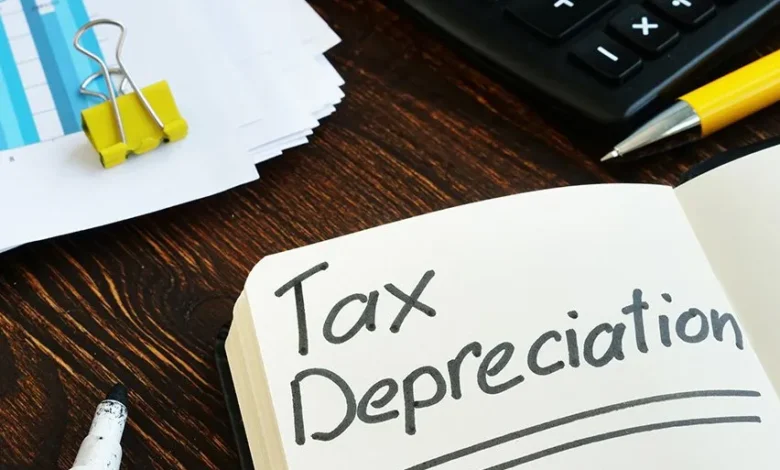What You Can Claim on a Tax Depreciation Report

Property investors in Australia could be missing out on thousands of dollars in potential tax savings each year simply because they don’t understand what they can legitimately claim through tax depreciation. The Australian Taxation Office recognizes that investment properties and their components lose value over time, allowing owners to claim this depreciation as a tax deduction. A comprehensive tax depreciation report serves as your roadmap to maximizing these claims, identifying every eligible item and calculating their declining value. Understanding exactly what you can claim on your tax depreciation report is crucial for optimizing your investment returns and ensuring you’re not leaving money on the table at tax time.
Understanding Tax Depreciation Reports – The Basics
A tax depreciation report, also known as a depreciation schedule, is a detailed document prepared by a qualified quantity surveyor that identifies and quantifies all the depreciating assets within your investment property. These reports detail the tax depreciation deductions you can claim on your investment property, outlining the value of your assets and how much they have depreciated and will depreciate. The report serves as ATO-compliant documentation that supports your annual tax deductions, providing peace of mind during tax time and potential audits.
These reports are essential because they capture depreciation opportunities that property owners often overlook. Without a professional assessment, investors typically only claim obvious items like appliances, missing numerous other depreciating assets throughout their property. The report doesn’t expire but should be updated when significant renovations or improvements are made to ensure you’re claiming all available deductions.
The Two Main Categories of Claimable Depreciation
Depreciation deductions are split into two distinct categories: Division 43 capital works allowance and Division 40 plant and equipment depreciation. Understanding these two divisions is fundamental to maximizing your tax depreciation claims, as they operate under different rules and depreciation rates.
Division 43 covers the structural elements and permanent fixtures of your property, depreciating at a standard rate of 2.5% per year over 40 years. Division 40 encompasses removable items and mechanical equipment, which typically depreciate much faster based on their individual effective life spans. The distinction between these categories affects not only how much you can claim annually but also whether certain items are eligible for depreciation at all.
Division 43 – Capital Works Deductions
Division 43, also known as the Capital Works Deduction or Building Write-Off, allows property owners to claim tax deductions for the wear and tear of the structural elements of income producing properties, including buildings and structural improvements such as walls, roofs and driveways. This category encompasses all the permanent, fixed elements that form the structure and essential infrastructure of your investment property.
The beauty of Division 43 claims lies in their reliability and longevity. While the annual deduction rate is fixed at 2.5%, these claims continue for the full 40-year period, providing consistent tax benefits throughout your property ownership. Getting a professional Tax Depreciation Report ensures that every eligible structural element is identified and valued correctly, maximizing your potential claims under this division. Professional quantity surveyors have the expertise to identify items that property owners often overlook, such as site preparation costs, landscaping infrastructure, and specialized building components.
Items under Division 43 include not only the basic building structure but also permanent improvements and additions made over time. The key characteristic is that these items cannot be easily removed without causing damage to the property structure.
Division 40 – Plant and Equipment Depreciation
Division 40 covers plant and equipment items, which are generally removable assets that can be taken from the property without causing structural damage. These assets depreciate according to an individual effective life and therefore depreciate at a much faster rate than structural items. This category often provides more immediate tax benefits due to the accelerated depreciation rates.
However, there’s an important caveat for Division 40 items. Assets purchased second-hand as part of the property, or installed to the property, are not eligible for annual deductions whilst you own the property. This means that if you purchase an existing investment property, you can only claim depreciation on plant and equipment items that were new when the property was first used as a rental, or items you’ve subsequently purchased and installed yourself.
Specific Items You Can Claim Under Division 43
The range of items claimable under Division 43 is extensive and often surprises property investors. The building structure itself forms the foundation of these claims, including external and internal walls, the roof structure, foundations, and floor slabs. These fundamental components represent significant value and provide substantial annual deductions over the 40-year depreciation period.
Beyond the basic structure, Division 43 covers numerous improvements and installations. Driveways, pathways, and permanent landscaping features like retaining walls and built-in garden beds are all eligible. Swimming pools, spa installations, and permanent outdoor entertainment structures provide valuable depreciation claims. Fencing, whether for security, privacy, or boundary definition, falls under this category, as do permanent shade structures and carports.
Internal structural improvements also qualify, including permanent kitchen installations, built-in wardrobes, and fixed bathroom fixtures. Permanent floor coverings like tiles and fixed carpeting, as well as built-in storage solutions and permanent room dividers, contribute to your Division 43 claims. Even specialized installations like home theaters, built-in study areas, and permanent gym equipment installations can be included.
Specific Items You Can Claim Under Division 40
Plant and equipment items under Division 40 typically offer faster depreciation rates, making them particularly valuable for immediate tax benefits. Kitchen appliances represent a significant category, including ovens, cooktops, rangehoods, dishwashers, and refrigerators in furnished properties. These items often have effective lives ranging from 10 to 20 years, providing substantial annual deductions.
Climate control systems form another major category, encompassing air conditioning units, heating systems, ceiling fans, and ventilation equipment. These mechanical systems typically depreciate over 15 to 25 years, depending on their type and quality. Hot water systems, whether gas, electric, or solar, also fall under Division 40 with their own specific effective life periods.
Interior fixtures and fittings provide numerous claiming opportunities. Light fittings, from basic ceiling lights to elaborate chandeliers, are all claimable. Window treatments including blinds, curtains, and automated shutter systems depreciate as plant and equipment. Removable floor coverings like loose-laid carpets and rugs in furnished properties can be claimed, as can moveable furniture and furnishings.
Security and communication systems represent modern claiming opportunities often overlooked by property owners. Security cameras, alarm systems, intercom systems, and smart home technology installations all qualify under Division 40. Even items like garage door openers, automatic gates, and irrigation systems contribute to your depreciation claims.
Common Mistakes and What You Cannot Claim
One of the most significant mistakes property investors make relates to second-hand assets. Many assume they can claim depreciation on all the appliances and fixtures that came with their investment property purchase. However, if these items were not new when the property was first rented out, they’re not eligible for Division 40 depreciation claims during your ownership period.
Land value cannot be depreciated, as land doesn’t wear out or become obsolete in the same way buildings and equipment do. This is why it’s crucial to have separate valuations for land and improvements when preparing depreciation schedules. Personal use items, or anything used for your own benefit rather than producing rental income, are also excluded from depreciation claims.
Low-cost items worth less than $300 can generally be claimed as immediate deductions. While this might seem like a limitation, it’s actually beneficial as it allows for immediate write-offs rather than spreading the deduction over several years.
Maximizing Your Depreciation Claims
The best time to get a tax depreciation schedule drawn up is soon after settlement on the property. This timing ensures that all original construction and installation details are fresh and accessible, and that you don’t miss out on any claiming periods. The earlier you obtain your depreciation report, the more years of depreciation benefits you can claim.
Professional quantity surveyors bring expertise that property owners simply cannot replicate. They understand the nuances of ATO regulations, know how to identify and categorize every claimable item, and can provide the detailed documentation required for ATO compliance. Their comprehensive approach often identifies thousands of dollars in additional claims that property owners would miss.
Maintaining detailed records of all improvements, renovations, and new installations is crucial for ongoing depreciation claims. Every receipt, invoice, and completion certificate should be retained, as these documents support both current and future depreciation claims. When you make improvements to your property, updating your depreciation schedule ensures you can claim depreciation on the new items.
Regular property inspections and schedule updates become important as your property ages and you make improvements. While the original depreciation schedule doesn’t expire, changes to your property may warrant updates to maximize your claiming potential and ensure accuracy.
Conclusion
Understanding what you can claim on a tax depreciation report opens the door to significant tax savings that can substantially improve your investment property returns. From structural elements depreciating over 40 years under Division 43 to plant and equipment items with faster depreciation rates under Division 40, every legitimate claim contributes to your bottom line. The key lies in obtaining a comprehensive, professionally prepared depreciation report that identifies every eligible item and calculates depreciation according to ATO guidelines. With thousands of dollars in potential annual tax savings at stake, investing in proper depreciation advice and documentation isn’t just smart financial planning—it’s essential for maximizing your property investment success. Don’t let valuable depreciation opportunities slip away; ensure you’re claiming everything you’re entitled to and keeping more of your investment income where it belongs.




